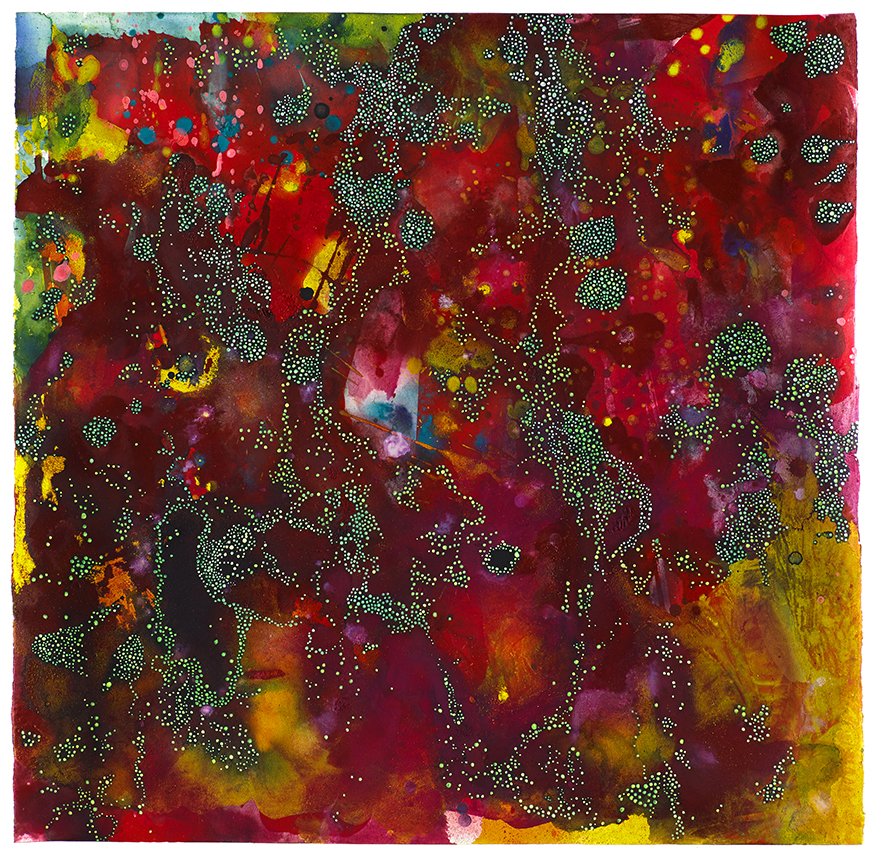
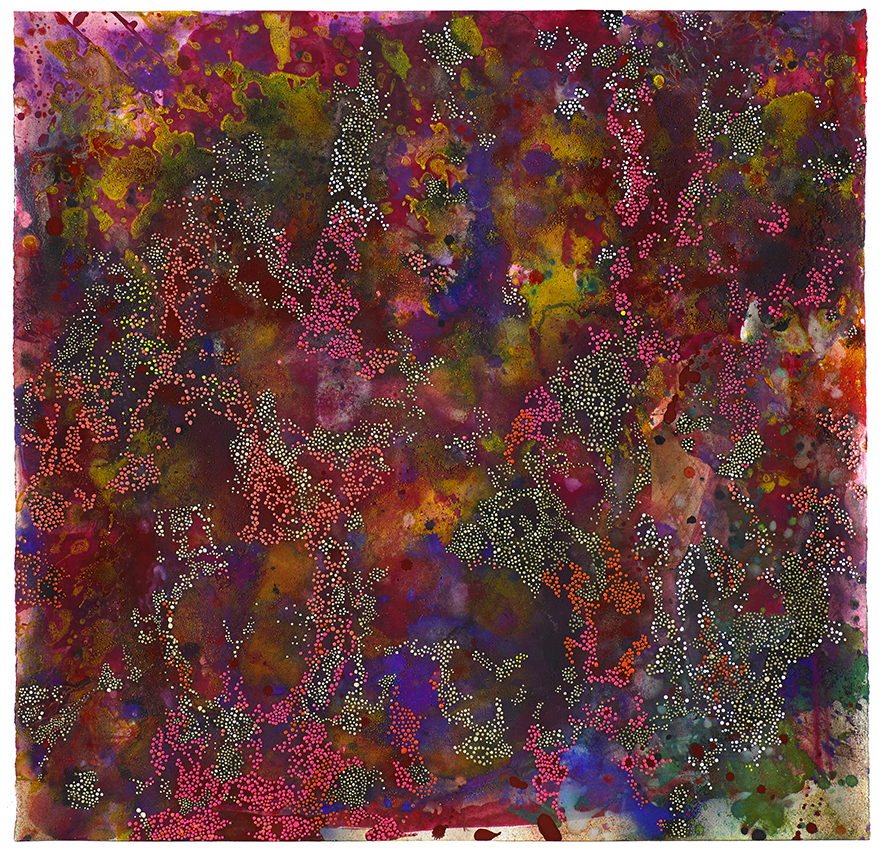
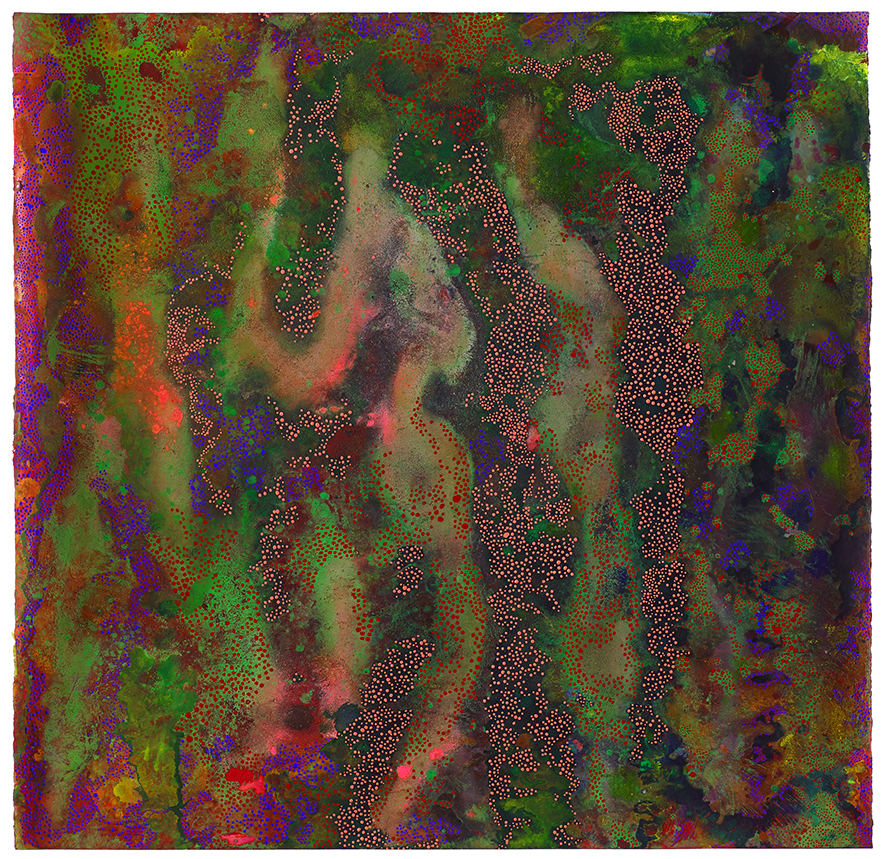
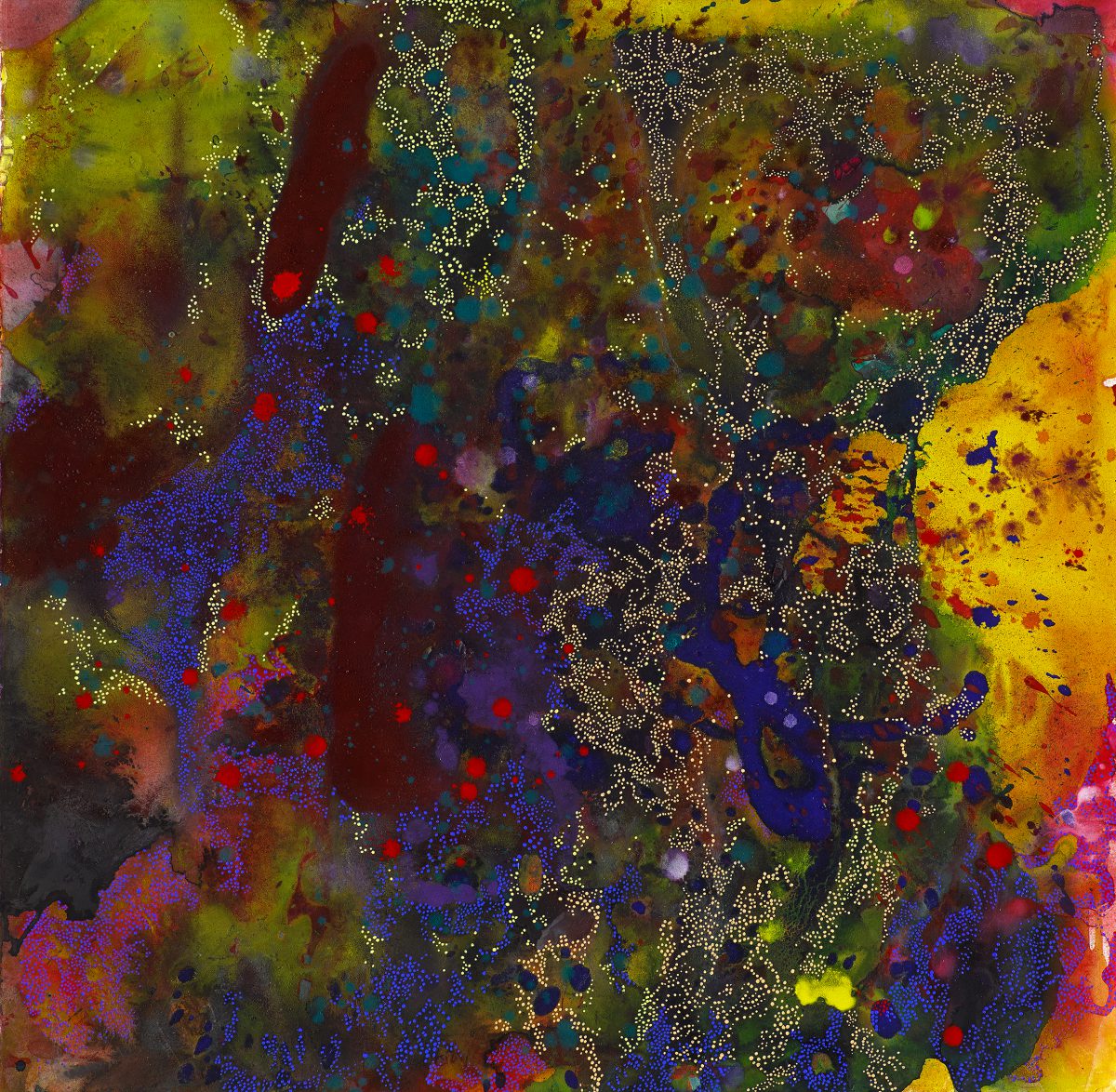
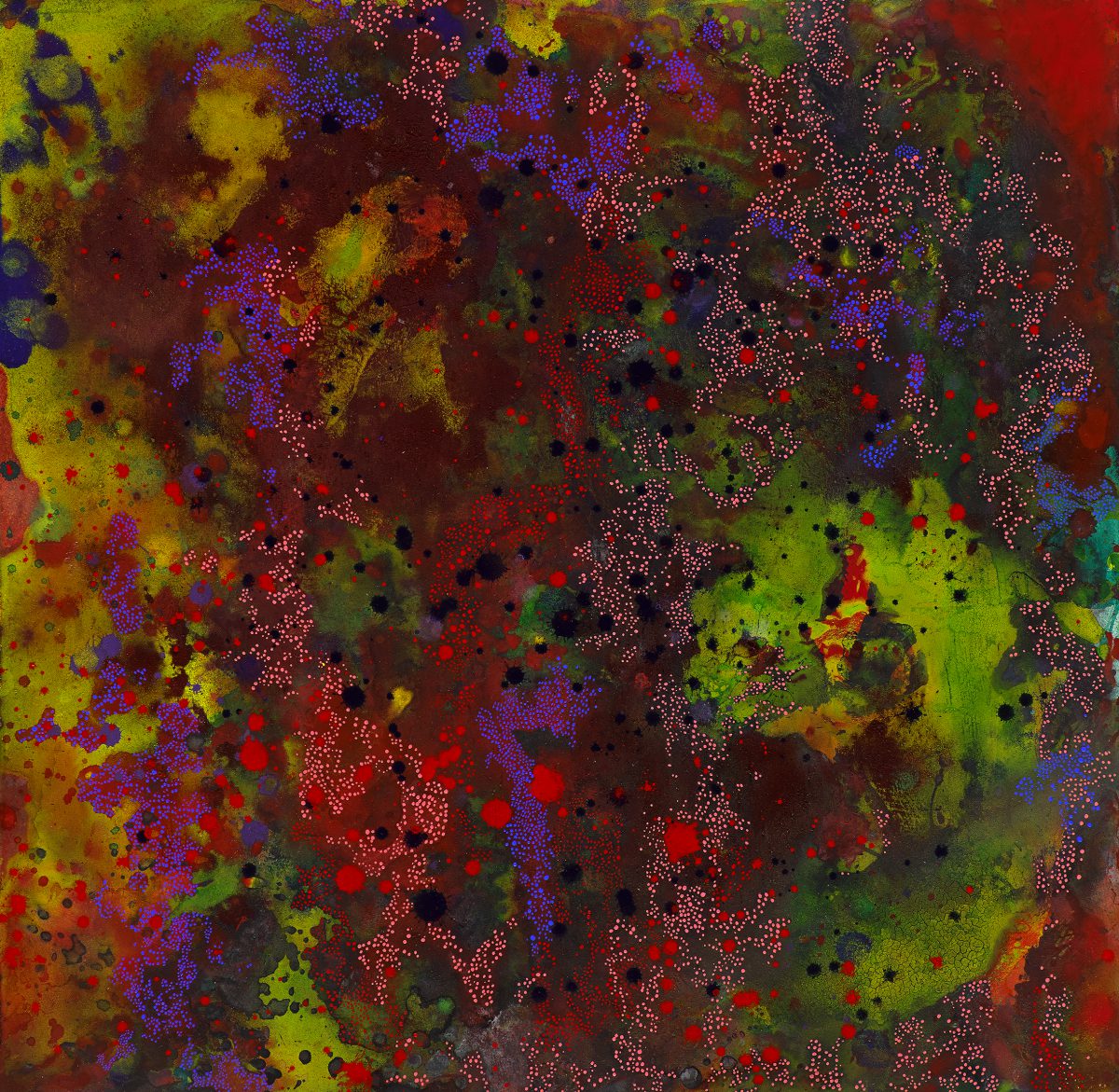
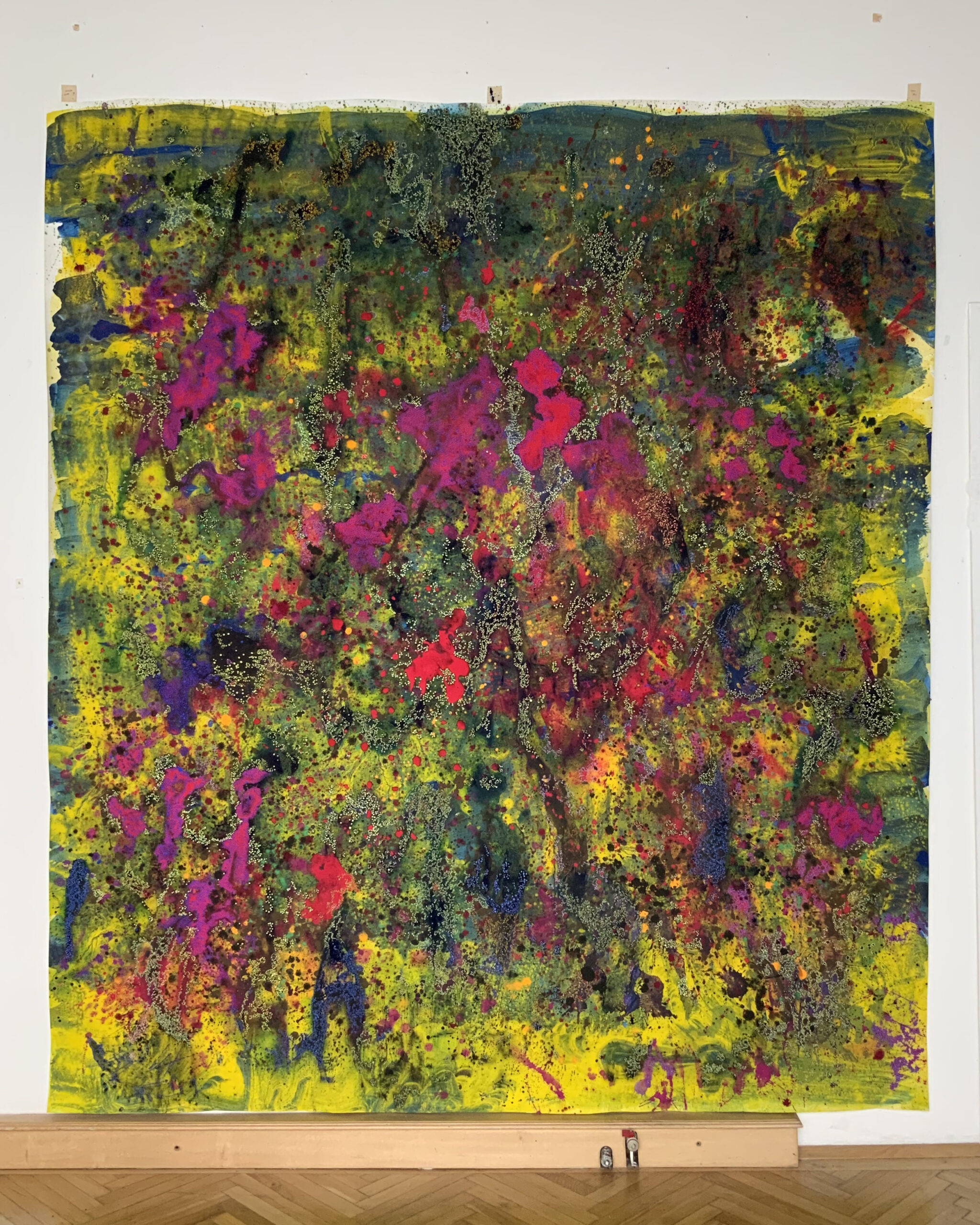
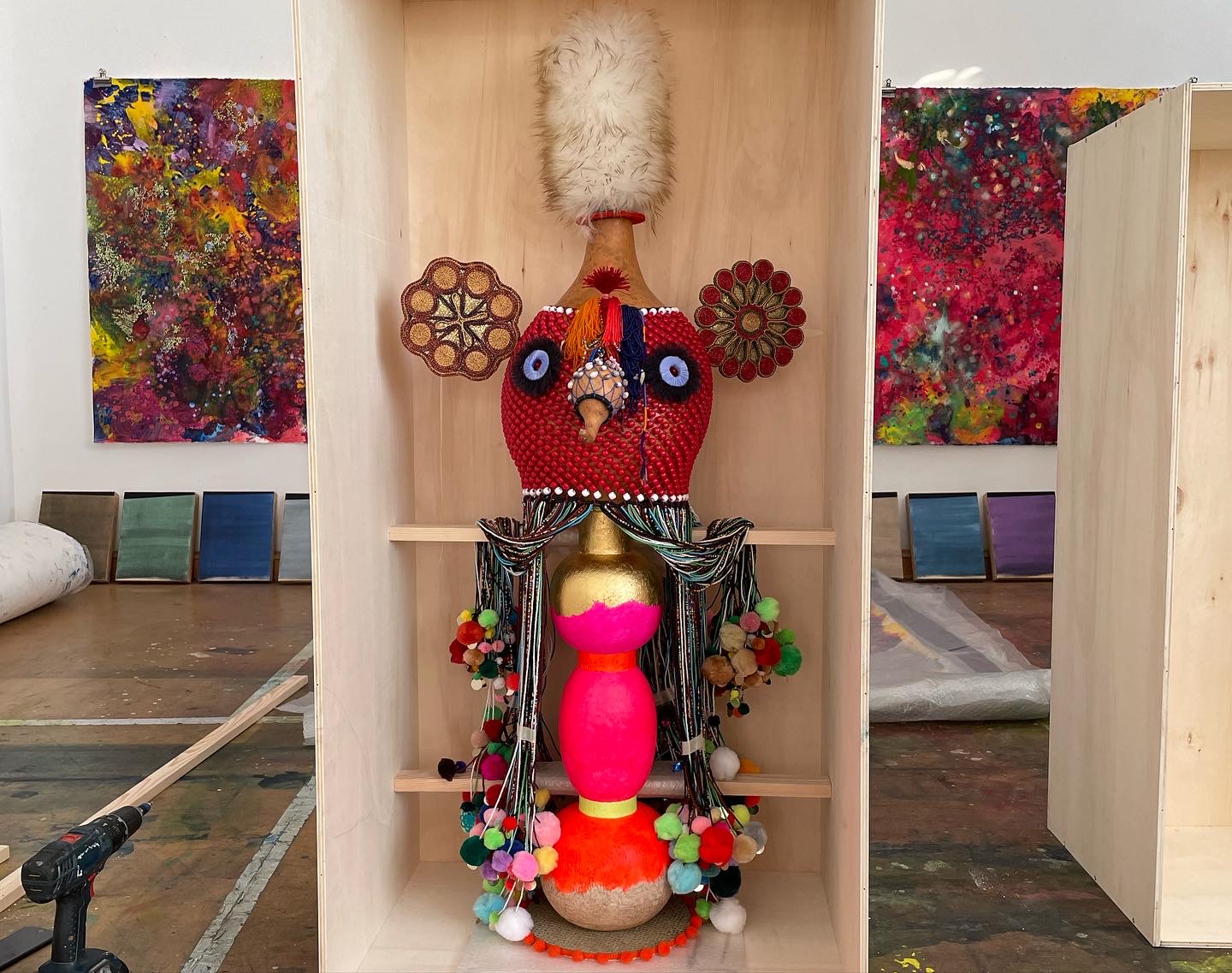
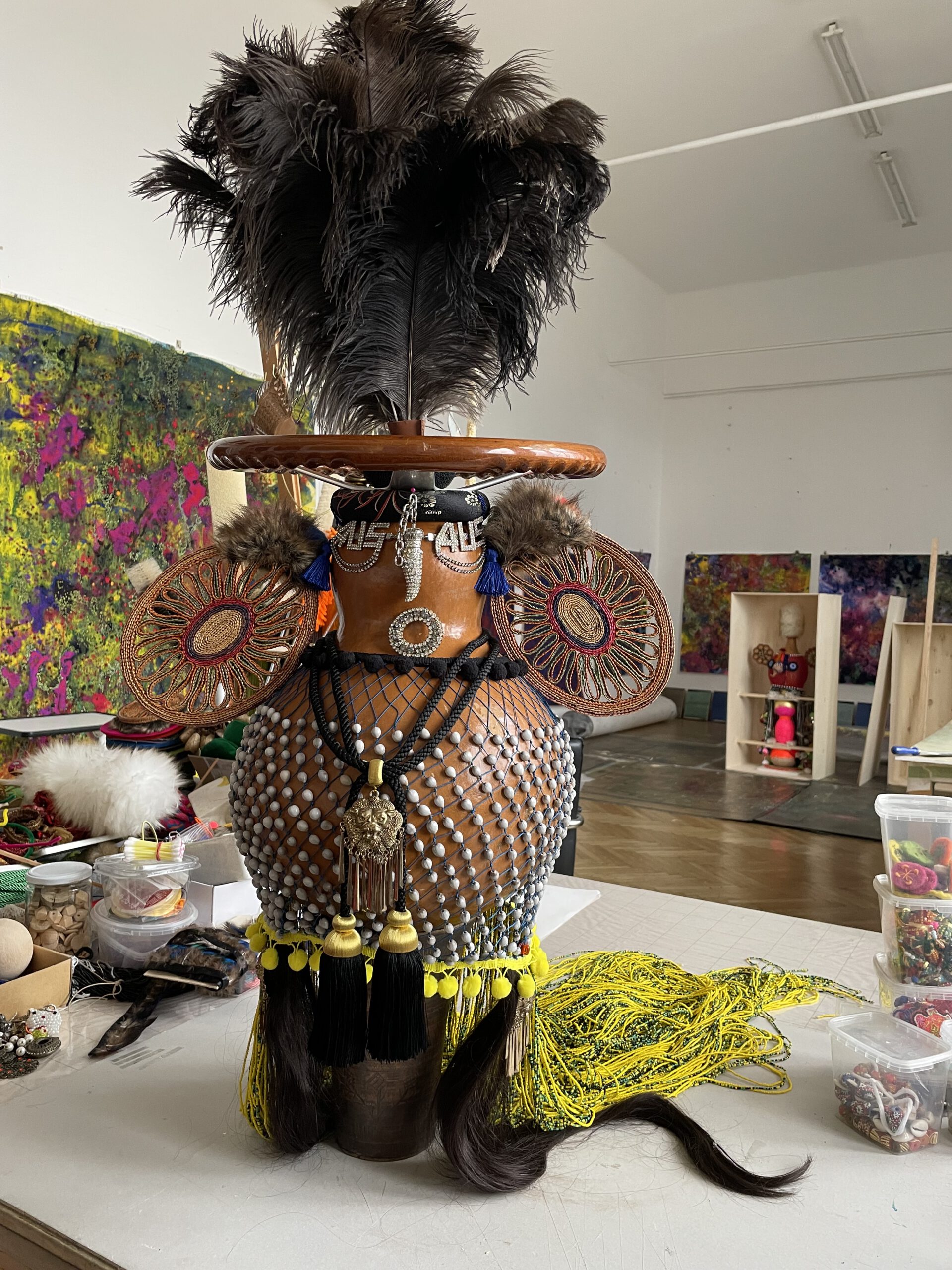
MICHELA GHISETTI
Michela Ghisettis Werk bewegt sich zwischen den Polen Abstraktion und Figuration. In ihren Arbeiten fließen biografisch-emotionale und philosophisch-kunsttheoretische Elemente ineinander. Es entstehen konzeptuell strenge, humorvolle und intuitive Werkgruppen, in denen die Künstlerin stets neue Inhalte und unterschiedlichste Materialien erprobt und deren Grundlagen hinterfragt. Von Anfang an bevorzugt sie Papier als Bildträger und arbeitet mit seinen jeweiligen Qualitäten ‒ vom transparenten Japanpapier bis zu den Kartons der jüngsten Werke. Ob weiß oder farbig, der Mal- oder Zeichengrund übernimmt auch inhaltliche Aspekte und trägt wesentlich zum Gesamteindruck der Arbeiten bei. Zudem finden Beobachtung und Reflexion des Bewegungsablaufs im Gestaltungsprozess ihren Niederschlag, wobei Material und Größe des Bildträgers wesentlichen Einfluss haben.
Die Frau und ihre gesellschaftlich bedingten Rollen sind in Ghisettis Arbeit schon bald in unterschiedlichsten Facetten als Thema präsent. 2012 verhandelt Ghisetti in dem Triptychon Afua ‒ Afua/Der Weg ‒ Maximum nicht nur genderspezifische Dimensionen der Präsentation und Repräsentation der Frau in der heutigen Gesellschaft, sondern auch das globale Geschehen immer mehr bestimmende Fragen der Integration und Diversität. Das Werk ist zwischen größtmöglichem Fotorealismus und völliger Abstraktion angesiedelt.
Punkte und Kreise tauchen bei Ghisetti von Anbeginn auf, wie eine kleine, „Per-sonare“ betitelte Zeichnung von 1994 zeigt. Mit der 2016 begonnenen Serie „Tutto“ erobern sie nun die gesamte Bildfläche: Kleine und große Tupfen entfalten ein Universum der Unendlichkeit, in dem die Vision eines versöhnlichen Nebeneinanders unterschiedlichster Farben, Formen und Größen zu einem politischen Statement wird, das zu einem respektvollen Leben inmitten der Vielfalt aufruft. Im Fall von In Whose Watery Vastness Life Began explodiert nicht nur das Format, sondern auch inhaltlich wird dem Punkt als mystisches Symbol für die Quelle aller Dinge durch den Titel noch das Wasser als Metapher für den Ursprung des Lebens wie das uns mitbestimmende Unterbewusstsein hinzugefügt.
„Che Bambole!“ ist eine heiter sich austauschende Gruppe von Puppen. Jede hat ihren eigenen Namen und ihren eigenen Charakter und Aufbau. Und dennoch bilden sie eine Gemeinschaft, sind eine Einheit. 2 der Puppen sind in der Galerie Albrecht zu sehen, 10 in ihrer Ausstellung in der Albertina Wien. Ghisetti verbrachte längere Zeit in Afrika, wo sie von Skulpturen der Stammeskunst inspiriert wurde. Die Serie kreist um das Thema der Würdigung weiblicher Vielfalt, für die hier die aus den unterschiedlichsten Materialien komponierten Puppen stehen. Gerade auch in unserer von der Pandemie geprägten Zeit werden besonders die jüngsten Werke Michela Ghisettis zu einem Aufruf, sich als Teil eines Ganzen zu verstehen und Verantwortung für die Erde und die Gesellschaft zu übernehmen.
Antonia Hoerschelmann, Hauptkuratorin der Albertina Wien, Auszug aus „Tutto“, Ausstellungskatalog Michela Ghisetti, Albertina Wien 2020, S. 3-5.
Michela Ghisetti (*1966 in Bergamo) studierte Malerei und Grafik an der Accademia Carrara di Belle Arti in Bergamo und an der Akademie der Bildenden Künste in Wien. Seit 1992 lebt und arbeitet sie in Wien. Ihre Arbeiten wurden in zahlreichen Ausstellungen im In- und Ausland präsentiert, darunter Eisler Preis Ba-Ca Kunstforum Wien, Albertina Contemporary – Gerhard Richter bis Kiki Smith, Galerie Viktor Bucher Wien, Museum der Moderne Sotschi, Studio Cannaviello Mailand, Art Award Kunstforum Strabag, Sotheby‘s Wien, Look! Albertina Museum Bildraum 07 Wien, Galerie Geresdorfer Wien. Derzeit hat sie eine Einzelausstellung im Albertina Museum Wien. Ihre Werke befinden sich in öffentlichen und privaten Sammlungen wie der Sammlung des Albertina Museums, des Angerlehner Museums und Strabag.
Michela Ghisetti’s work ranges between the poles of abstract and figurative art. In her works, biographical and emotional elements merge with issues of philosophy and art theory. This gives rise to conceptually rigid, humorous and intuitive groups of works in which the artist constantly tries out new content and a wide variety of materials, challenging their fundamental principles. Right from the outset she has preferred using paper, working with its different qualities ‒ from transparent Japan paper to the cards used for her most recent works. Whether white or coloured, the painting or drawing surface also takes on aspects relating to the content and makes a significant contribution to the overall impression of the works. Moreover, observation and reflection of the sequence of movement find their expression in the creative process in the course of which the material and size of the image surface exert a major influence.
Woman and her socially defined roles have long been present as a theme in Ghisetti’s work in a wide variety of facets. In 2012, in her triptych Afua ‒ Afua/The Path ‒ Maximum, Ghisetti does not only address gender-specific dimensions of the presentation and representation of woman in today’s society, but also questions of integration and diversity that are increasingly shaping global events. The work is positioned between the greatest possible degree of photorealism and complete abstraction. This contradiction also defines her most recent works presented here for the first time.
Dots and circles have appeared in Ghisetti’s work right from the start, as a small drawing from 1994 with the title “Per-sonare” shows. In the series “Tutto”, begun in 2016, they take over the entire surface of the image: small and large spots unfurl a universe of infinitude in which the vision of a conciliatory juxtaposition of a wide variety of colours, shapes and sizes becomes a political statement calling for a life of respect in the midst of diversity. In the case of In Whose Watery Vastness Life Began it is not only the format that explodes, but in relation to the content the title adds water as a metaphor for the source of life, the subconscious that has a determining influence on us, to the dot as a mystic symbol of the source of all things.
The dolls „Che Bambole!“, as Ghisetti calls them, form a group. 10 of it are to be seen in her exhibition at Albertina Museum Wien, 2 are exposed in the exhibition at Galerie Albrecht. The artist plans to enlarge the group over the time. The dolls are engaged in a cheerful exchange. Each one has its own name, its own character and structure. And yet they form a community, a unit. Ghisetti spent an extended period of time in Africa where she was inspired by tribal art sculptures. The series revolves around the theme of appreciation of female diversity represented here by the dolls made of the widest variety of materials. In our time shaped by the pandemic, Michela Ghisetti’s most recent works in particular constitute an appeal to understand ourselves as part of a whole and to accept responsibility for the world and for society.
– Antonia Hoerschelmann, chief curator Albertina Museum Vienna, excerpt from „Tutto“, exhibition catalogue Michela Ghisetti, Albertina Vienna 2020, p.3-5.
Michela Ghisetti (born in 1966 in Bergamo) studied painting and graphic arts at the Accademia Carrara di Belle Arti in Bergamo and the Akademie der Bildenden Künste in Vienna. Since 1992, she has been living and working in Vienna. Her work has been presented in numerous exhibitions,both nationally and internationally, including Eisler Preis Ba-Ca Kunstforum Wien, Albertina Contemporary – Gerhard Richter bis Kiki Smith, Galerie Viktor Bucher Vienna, Museum der Moderne Sotschi, Studio Cannaviello Milan, Art Award Kunstforum Strabag, Sotheby´s Vienna, Look! Albertina Museum Bildraum 07 Vienna, Galerie Geresdorfer Vienna. Currently she has a solo show at the Albertina Museum Wien. Her works are in public and private collections such as the collection of the Albertina Museum, the Angerlehner Museum and Strabag.